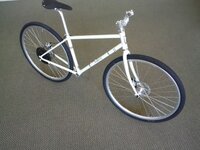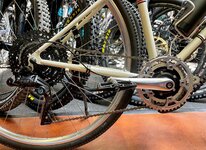There is a very long, steep hill that I must climb any time I want to go anywhere from home.
I am in the market for an ebike, but after studying it for a while I have decided I need these characteristics:
1. 750W continuous power
2. mid-drive
3. less than 50 pounds total weight, including battery
4. torque sensor
Are there any ebikes that meet this criteria? I have looked and looked and have not found one. All the lightweight ebikes seem to have 250W motors.
As a second question: If there are no such existing ebikes, can it be built as a DIY?
Thanks for any help!
I am in the market for an ebike, but after studying it for a while I have decided I need these characteristics:
1. 750W continuous power
2. mid-drive
3. less than 50 pounds total weight, including battery
4. torque sensor
Are there any ebikes that meet this criteria? I have looked and looked and have not found one. All the lightweight ebikes seem to have 250W motors.
As a second question: If there are no such existing ebikes, can it be built as a DIY?
Thanks for any help!


